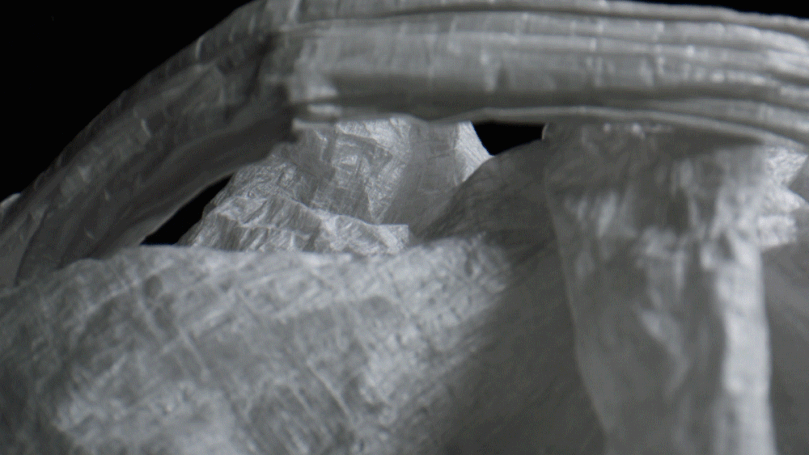History
Before plastic bags, there was paper.
The invention of polyethylene came nearly a century after the paper bag's conception in 1852. During WWII, synthetic plastics were an invaluable secret with numerous uses in the military. However, high-density polyethylene (HDPE) wasn't invented nor applied to grocery bags until after the war. Ironically, the plastic bag was introduced to mitigate the paper bag's environmental impact in the 1960s.

Sten Gustaf Thulin, an engineer for Celloplast, hoped his invention would be reused again and again. But mass production by Big Oil, low-cost for retailers, and convenience benefits for the consumer retailers have led to the widespread global environmental ramifications we are experiencing today. Ubiquity breeds contempt – consumers came to see plastic bags as disposable, defeating its initial purpose.
Impact
Plastic bans have led to the introduction of reusable bags. But like plastic bags, reusable bags accumulate. The lack of formal recycling designations for these new types of bags has created an endless array of environmental issues.

Dyneema
At first glance, DSM’s Dyneema has a clear aesthetic resemblance to HDPE. Ultra High Molecular Weight Polyethylene (UHMWPE) embodies all the material characteristics of HDPE but is odorless, tasteless, and nontoxic in production and finished state. Heralded as The Greenest Strength™, it has the lowest carbon footprint on a strength to weight ratio. Although Dyneema falls under the umbrella of plastic, this grade of thermoplastic polyethylene shows promise towards a circular economy.
Integration
It's coincidental Dyneema’s development ran parallel with polyethylene in the 1960s. Our choice of a fibre stronger than steel and resistant to corrosive chemicals and abrasion serves as a rebellious juxtaposition of material from then versus now. This bag introduces an alternative reality– a dimension truly challenging the conventional perception of disposability.

Utilization
Plastic bag re-use for storage or trash has always been common practice. Our reinterpretation’s resemblance to the classic market bag echoes Thulin’s original purpose of utilization. Possible contexts for differentiating lifestyle applications are limited only by the user's creativity, an analogous testament to its name: amorphous.

Our Solution
Amorphous Bag 1
Reinterpretation of the classic market bag constructed with 1.4 oz Dyneema Composite Fabric. Includes manual-spliced, heavy-duty Dyneema rope for versatile carrying configurations and solo-utilization purposes.
Amorphous Bag 2
Capacious version of our market bag constructed with 1.4 oz Dyneema Composite Fabric. Developed with elongated straps for versatile carrying configurations and paracord fastened pouch for simple packability.
FAQs
Is Dyneema waterproof or water resistant?
Dyneema Composite Fabric is constructed from a thin layer of ultra-high-molecular-weight polyethylene laminated in between two sheets of polyester. Due to lamination, DCF itself is completely waterproof. However, since the bag is constructed with different panels by thread, minimal liquid may seep into the interior. The amorphous bags as a whole are water-resistant.
Is Dyneema Composite Fabric puncture-proof?
DCF is not puncture-proof. As a result, placing sharp, abrasive objects freely within the bag is highly discouraged. Utilizing the dust-bag or other forms of secondary containment is suggested.
What is the best way to clean Dyneema?
Hand-washed with laundry detergent and cold water, for best results use a soft cloth and wipe down soiled surfaces. Line and air-dry only.
What is the weight capacity of each bag?
Amorphous bags have a suggested weight capacity of no more than 30 lbs. Although the maximum tested weight capacities for the bags are nearly double the suggested, it is important to note that high-stress at certain contact points of the fabric may compromise its integrity.
How does the Dyneema age over time?
Over time, it’s going to break in and get softer, which is the nature of the fabric.




